Best Mini ITX PC cases 2025: our tested recommendations for compact builds
Small form factor, big fun factor.
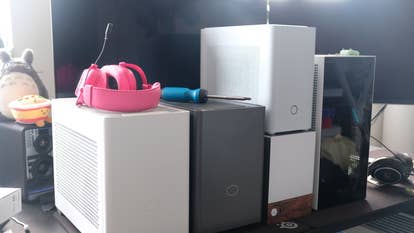
I have a confession: I really like building small form factor PCs. Whether it's a pint-sized media PC or an all-out gaming rig, there's something supremely satisfying about packing all of these powerful components into something that you can tuck under one arm or stash behind a monitor.
I've built nearly a dozen Mini ITX builds over the past few years, and now it feels like a good time to share what I've learned - my go-to small form factor cases that make speccing and building easy, designs that perform well and look great.
Here then are my battle-tested recommendations for the best Mini ITX PC cases, including two popular options from Fractal Design and Cooler Master, and two more niche examples from iQunix and NZXT.
Best Mini ITX case overall: Fractal Terra
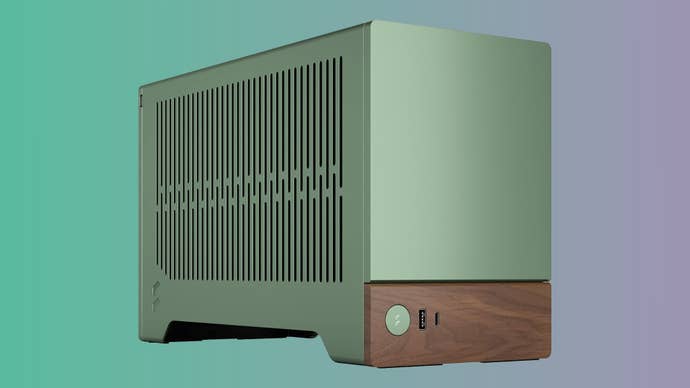
- 10.4L, up to 322mm long GPUs, up to 77mm tall CPU coolers, SFX/SFX-L
- Buy: see at Amazon UK, see at Amazon US
The Fractal Terra is one of the easiest PC cases to recommend, thanks to its unique looks, good component compatibility and solid build quality. The Terra can accommodate relatively large GPUs by default, while the motherboard rests on a "spine" that can be moved to provide more GPU space at the expense of CPU cooler space or vice versa. It's a clever idea that's well executed, a remark that can be applied to most aspects of the case.
I particularly like the green, silver and black colour options and wood elements on the front of the case, which provide a more organic feel. Build quality is also excellent, with the aluminium construction inspiring confidence in the case's ability to withstand any minor knocks while travelling. I also appreciate that you can swing both side panels up to get easy access to the system, show off your internals or potentially let it stay a bit cooler during particularly demanding workloads.
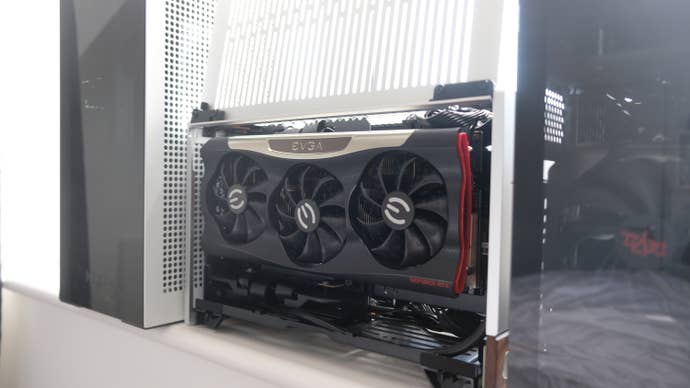
My build: The Fractal Terra can accommodate a good range of graphics cards but doesn't suit AiOs - without modifications - so I opted for a build that combines a low-profile air cooler, the Noctua NH-L9i-17xx, with the moveable spine in its middle/stock position to allow for a relatively large graphics card. I opted for an Intel Core i9 285K processor, which is often inferior in performance terms to the 14900K it replaces, but a significant improvement in terms of thermals. On the graphics card side, I slotted in a triple-slot EVGA RTX 3080. The combination provides enough grunt to run racing titles like F1 23, Assetto Corsa Competizione and BeamNG, while still being compact enough to easily move to different areas of the house or even in the car for LAN parties with friends. The only post-build modification I've made is adding a Noctua NA-FD1 fan duct kit, which creates a sealed path for fresh air to enter the CPU cooler rather than the CPU cooler drawing heated air from elsewhere in the case.
Best value Mini ITX case: Cooler Master NR200P
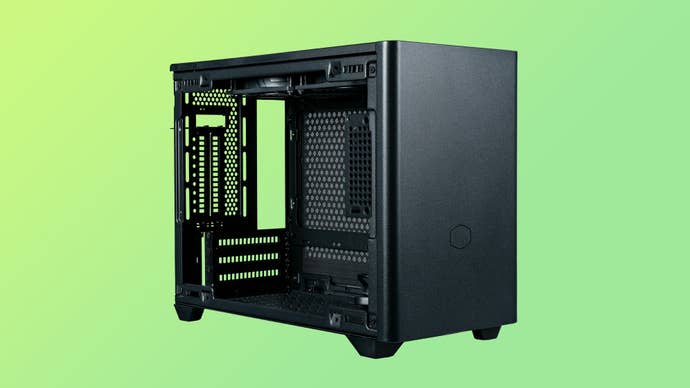
- 18.25L, up to 330mm long GPUs, up to 155mm tall CPU coolers or 280mm AiO, SFX/SFX-L
- Extras: PCIe 3.0 riser cable, 2x 120mm LP fans, glass and metal mesh side panels
- Buy: see at Amazon UK, see at Amazon US
The Cooler Master MasterBox NR200P is a favourite of the small form factor community and for good reason, offering easy installation of both air coolers and AiO liquid coolers, fairly large graphics cards in both vertical and horizontal orientations, as well as tempered glass or metal mesh side panels and two low-profile fans. All panels come off without tools, making the build easier. Prices for the NR200P have been as low as £50, which is a bargain for a case of this quality.
As well as the V1 design recommended here, you can also find the NR200P Max, which includes a 280mm AiO and PSU, but only allows for an AiO plus vertical GPU configuration, and the NR200P V2, which has the same configuration restrictions, an extra USB-C port, and comes without AiO/PSU for a lower price.
At 18.25L, the NR200P is certainly on the larger side for an SFF PC case, but it's still small and light enough to take up minimal desk space and fit into a carry-on suitcase. The slightly larger dimensions allow for both SFX and SFX-L power supplies to be used, though (as always) this decision has knock-on effects and limits your options elsewhere. Building is relatively straightforward, and the only thing I'd say you need to keep in mind is that running some cables underneath the motherboard (such as your front panel cables) before it's screwed in can be advantageous. I/O here is relatively sparse, with just two full-size USB ports and a headphone jack, but it is easily reached at the top front of the case. The mesh side panel outperforms the tempered glass alternative, especially in terms of GPU cooling, but both perform well enough at the expense of some noise.
Overall, a strong and flexible case that doesn't push any boundaries visually, but hits all the essentials and benefits from an active community that have probably tried any build you're likely to attempt.
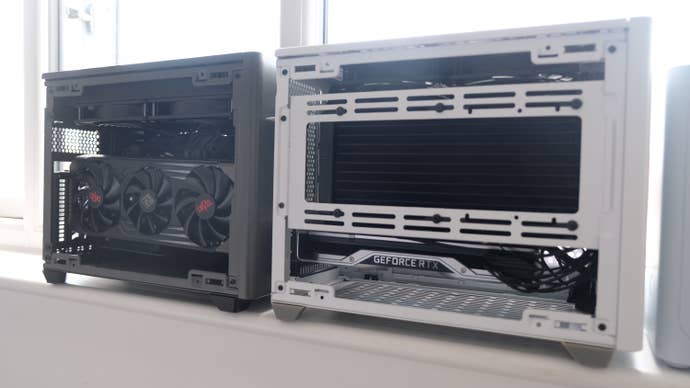
My build: I actually have two NR200P builds, both with modest GPUs and old Ryzen 9 processors to serve as mobile workstations - I used one in the Eurogamer office when writing up Black Friday deals, for example, as I wanted a quicker machine than my laptop at the time and needed something that would fit into a carry-on suitcase. One build, in the standard NR200P, uses a 240mm Asus AiO (as it was on sale for £60) and the RX 6750 XT, while the other is the NR200P Max, which uses the pre-installed 280mm AiO and PSU, and is currently inhabited by the RTX 2060.
Best premium Mini ITX case: iQunix ZX-1
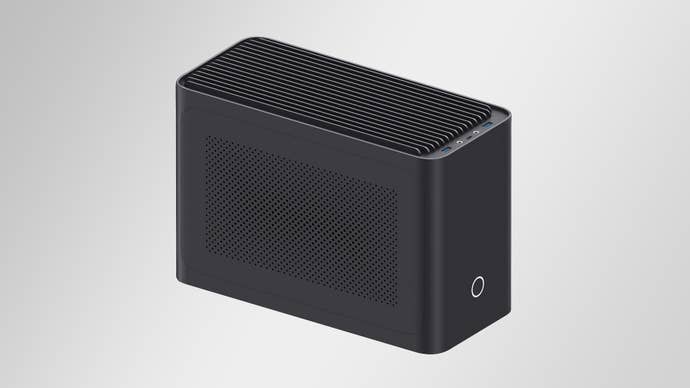
- 10.6L, up to 305mm long GPUs, up to 240mm AiO CPU cooler, SFX/SFX-L
- Extras: PCIe 4.0 riser cable
- Buy: iQunix Store w/ code eurogamer
The iQunix ZX-1 impresses with its machined aluminium unibody construction, small ~10L dimensions and magnetically-attached side panels. It's not the easiest to build in, especially with limited space up top for GPU power cables, but the ZX-1 supports reasonably long graphics cards and can accommodate up to a 240mm AiO for better CPU cooling. Having a PCIe 4.0 riser cable in the box also helps to justify its relatively high price. Above all though, this is a small form factor PC case that you choose because you love the way it looks, and the ZX-1 definitely stands out in a crowd - especially in its more eye-catching coral, creamy white and alice blue colourways.
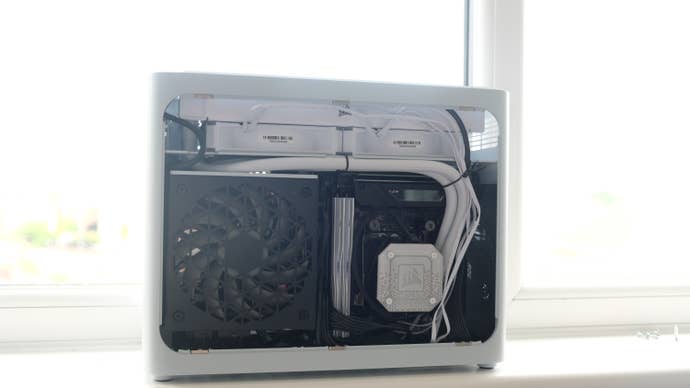
My build: I opted for a productivity-focused build in the ZX-1, combining a a 12-core Ryzen 9 7900X processor with a 240mm Asus AiO and an entry-level RTX 3050 graphics card. The combination isn't great for AAA gaming, but provides hardware acceleration for tasks like media encoding, video upscaling and noise removal. The PC's AiO is quiet when idle, but can become much louder when all cores and threads are being utilised. Still, there's little limiting CPU performance here, so encode times are identical to that of a full-size PC tower. Portability is obviously improved versus a larger build, but the aluminium frame makes this a relatively heavy PC despite its compact size. This was the hardest case of the four to build in, with extremely small gaps for the AiO cables to be routed through.
Best Mini ITX tower case: NZXT H1 V2
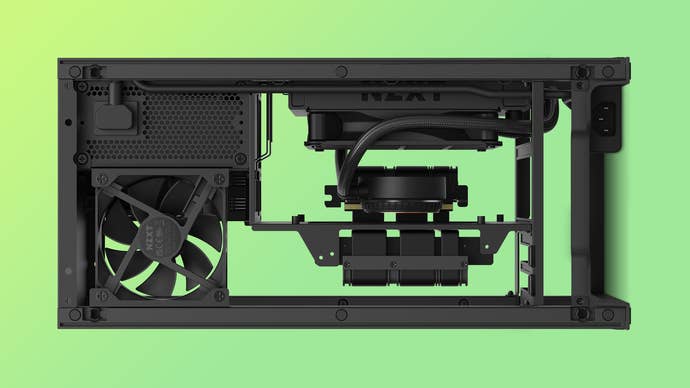
- 15.6L, up to 324mm long GPUs
- Extras: 140mm AiO CPU cooler, 750W SFX PSU, PCIe 4.0 riser cable
- Buy: Amazon UK, Amazon US
The NZXT H1 V2 is a great tower case that's often available for very little - though as it's not in active production, it's sadly hard to find. The H1's value comes from its beginner-friendly design, with a 750W PSU, 140mm AiO CPU cooler and PCIe 4.0 riser cable all pre-installed - so you don't have to worry about the most difficult parts of assembling a SFF PC.
The build process is largely just populating a Mini ITX motherboard with CPU, RAM and NVMe SSD storage, then sliding it in alongside a graphics card and plugging in a few cables. Once assembled, you'll enjoy a good-looking case with a minimal footprint, including a glass front to see your components and mesh sides that deliver good airflow.
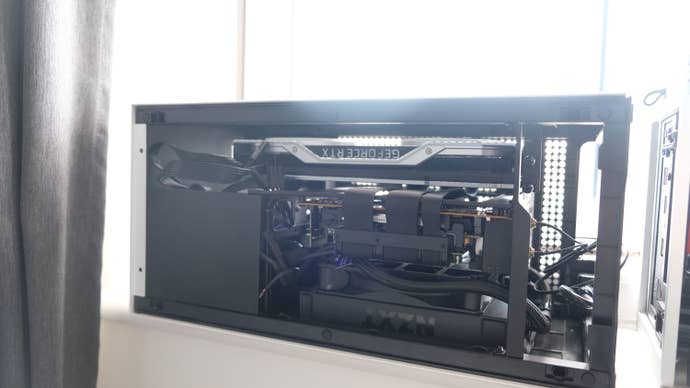
My build: The NZXT H1 V2 I've built sports a Core i7 12700K and RTX 2080 Super graphics card. It's ended up next to my TV downstairs, where it's served well for controller-based games and streaming media. There's plenty of headroom - both in terms of the PSU and physical space - to upgrade to a newer-gen graphics card if needed, and the H1 definitely feels easier to upgrade than smaller-volume alternatives.
Cheaper alternatives
Apart from the cases we've highlighted above, we've also seen good results from less expensive options. A friend of mine chose the MiniNeo S400 - a nice compact 10.8L option with an integrated carry handle and a PCIe 4.0 riser that pops up regularly on SFF PC forums.
There are also some outstanding deals to find if you're flexible. For example, Kolink normally do a range of relatively cut-price Mini ITX cases with few features, and recently their Rocket Complex tower case was just £20. These cases don't come with a ton of front I/O, innovative cable routing solutions or moveable spines, but for low to mid-range builds with physically smaller components and modest thermal/power requirements, they could be the perfect fit.
What about Micro ATX?
It's also worth thinking about slightly larger Micro ATX cases if you're on a strict budget, as these allow for significantly cheaper motherboards - Micro ATX boards tend to be cut-down ATX boards and require less engineering and miniaturisation than the tinier Mini ITX form factor, so they tend to be cheaper than standard ATX motherboards while ITX boards can be quite a lot more expensive. Most Micro ATX cases also support full-size power supplies, again allowing for cheaper options.
One recent example we liked is the NZXT H3 Flow (see on Amazon UK/Amazon US), which is typically well under £100/$100 and provides support for full-size ATX power supplies, up to 280mm radiators and triple-slot GPUs up to 377mm long.
Wrapping up
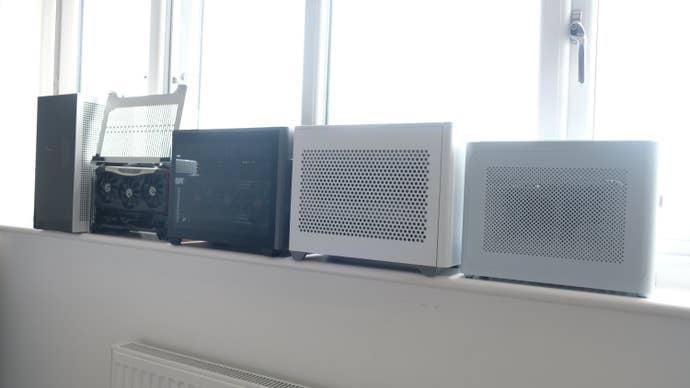
What do you think of our recommendations? And what cases should we test next? Let me know in the comments below or reach out on Bluesky @wsjudd.
